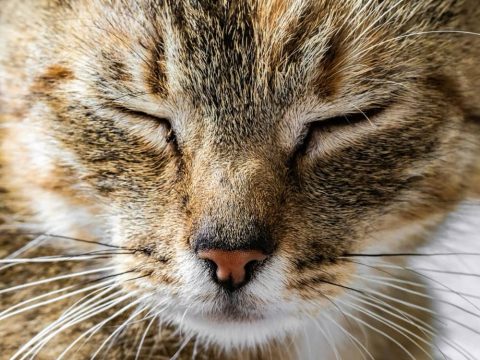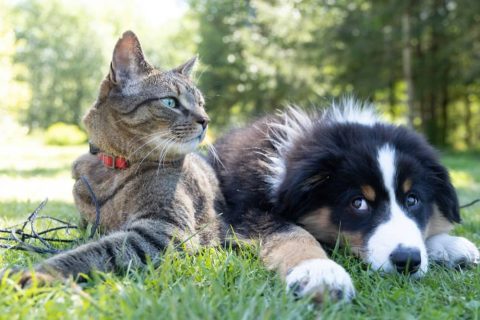When you notice your feline companion making unusual breathing sounds, particularly wheezing, it’s natural to feel concerned. While cats don’t typically wheeze like humans do, this respiratory symptom can occur and often indicates an underlying health issue that requires attention. The key to proper care lies in understanding the various causes behind cat wheezing and determining when immediate veterinary intervention becomes necessary.
Wheezing in cats ranges from minor inconveniences to life-threatening emergencies, making it crucial for pet owners to recognize the warning signs and respond appropriately. By learning to categorize these breathing difficulties based on their severity and accompanying symptoms, you can make informed decisions about your cat’s healthcare needs and potentially save precious time in critical situations.
Contents
Minor Respiratory Issues
Understanding the less serious causes of wheezing helps pet owners avoid unnecessary panic while still maintaining proper vigilance for their cat’s wellbeing. These minor issues typically resolve on their own or require minimal intervention.
Fur Ball Complications
Perhaps the most familiar cause of unusual breathing sounds in cats stems from hairball formation. As cats groom themselves meticulously, they inevitably swallow loose fur that can accumulate in their digestive system. When attempting to expel these fur masses, cats often produce wheezing sounds accompanied by hacking or retching motions.
This process, while uncomfortable to witness, represents a normal bodily function for most cats. The wheezing typically subsides within minutes once the hairball is successfully expelled. Pet owners should monitor the situation but generally don’t need to seek veterinary care unless the behavior persists for extended periods or the cat appears distressed beyond the normal hairball episode.
Environmental Sensitivities
Just like humans, cats can develop sensitivity reactions to various environmental factors. Common triggers include seasonal pollens, household cleaning products, perfumes, cigarette smoke, and dust particles. Cats with known allergic tendencies may wheeze when exposed to their specific triggers.
For cats with previously diagnosed allergies, occasional wheezing during exposure to known allergens doesn’t typically warrant emergency intervention. However, if you suspect your cat is experiencing new allergic reactions or if wheezing occurs alongside other symptoms like excessive scratching, watery eyes, or behavioral changes, scheduling a routine veterinary appointment becomes advisable for proper evaluation and potential treatment adjustments.

Moderate Health Concerns
Moving beyond minor issues, certain conditions require more attention and typically benefit from professional veterinary assessment and treatment, though they don’t usually constitute immediate emergencies.
Upper Respiratory Infections
Cats frequently develop respiratory infections, particularly those with outdoor access or exposure to other cats. These infections often present with wheezing as one of several symptoms. Bacterial or viral respiratory infections can cause inflammation in the airways, leading to breathing difficulties.
Additional signs that may accompany wheezing include nasal discharge, excessive eye watering, frequent sneezing fits, persistent coughing, and elevated body temperature. Cats with respiratory infections often display reduced appetite and decreased activity levels. While these infections rarely require emergency treatment, they do need professional attention to prevent complications and ensure proper recovery through prescribed medications.
Pet owners should schedule veterinary appointments when they notice these symptom combinations, as untreated respiratory infections can occasionally progress to more serious conditions affecting the lungs or other organ systems.
Feline Asthma Conditions
Asthma affects cats more commonly than many pet owners realize, with various environmental triggers potentially causing airway inflammation and breathing difficulties. Cats with asthma may wheeze during flare-ups, particularly when exposed to allergens, stress, or changes in weather conditions.
For cats with established asthma diagnoses, mild wheezing episodes can often be managed at home using prescribed medications such as bronchodilators or anti-inflammatory treatments. However, pet owners should maintain close communication with their veterinarian regarding the frequency and intensity of asthma episodes.
New cases of suspected asthma warrant veterinary evaluation to confirm the diagnosis and establish appropriate treatment protocols. Veterinarians may prescribe specialized inhalers designed for cats or recommend environmental modifications to reduce trigger exposure.
Serious Medical Emergencies
Certain underlying conditions that cause wheezing in cats require immediate emergency veterinary care. These situations can deteriorate rapidly and may become life-threatening without prompt professional intervention.
Heartworm Disease
Unlike dogs, cats face significantly greater risks from heartworm infections, even with relatively low parasite loads. Heartworms in cats can cause severe respiratory distress, including pronounced wheezing, that requires immediate emergency treatment.
Cats with heartworm disease may display additional symptoms such as vomiting, loss of appetite, difficulty breathing even at rest, and collapse episodes. The parasites affect the heart and lungs, potentially causing sudden death in severe cases. Any suspicion of heartworm infection demands urgent veterinary attention, as treatment options for cats remain limited and prevention strategies prove far more effective than treatment attempts.
Blocked Airways
Physical obstructions in a cat’s respiratory system represent true medical emergencies requiring immediate intervention. Cats may inhale small objects, food particles, or other foreign materials that become lodged in their nasal passages, throat, or airways.
Signs of airway blockage include sudden onset of severe wheezing, gasping, pawing at the mouth or face, and visible distress. These situations can progress to complete airway obstruction within minutes, making rapid emergency veterinary care essential for survival. Pet owners should never attempt to remove suspected foreign objects themselves, as this may push the obstruction deeper into the respiratory system.
Malignant Growths
Various types of cancer can affect a cat’s respiratory system, leading to chronic or progressive wheezing. Lung tumors, nasal cavity masses, and oral cancers may all interfere with normal breathing patterns and cause wheezing symptoms.
Cats with cancer-related wheezing often display additional signs such as persistent cough, weight loss, decreased appetite, and reduced activity levels. While cancer diagnosis and treatment don’t always require emergency intervention, significant breathing difficulties or sudden worsening of symptoms warrant urgent veterinary evaluation.
Cardiovascular Disease
Heart conditions in cats can manifest through respiratory symptoms, including wheezing, as the cardiovascular system struggles to maintain adequate circulation. Heart disease may cause fluid accumulation in the lungs, leading to breathing difficulties.
Cats with heart disease may exhibit wheezing alongside other signs such as rapid breathing, reduced exercise tolerance, and episodes of weakness or fainting. While chronic heart disease typically requires ongoing management rather than emergency care, sudden worsening of symptoms or obvious distress indicates the need for immediate veterinary attention.
Making Critical Care Decisions
Determining the appropriate level of veterinary care for a wheezing cat requires careful observation and quick decision-making. When uncertainty exists about the severity of your cat’s condition, choosing emergency veterinary care ensures your pet receives appropriate evaluation and treatment without dangerous delays.
Emergency veterinary facilities maintain the equipment and expertise necessary to handle severe respiratory emergencies, including oxygen therapy, advanced diagnostic imaging, and specialized treatments. These facilities can also provide guidance about whether continued emergency care is necessary or if follow-up with your regular veterinarian would be appropriate.
Remember that cats instinctively hide signs of illness, meaning visible symptoms often indicate more serious underlying problems than initially apparent. Trust your instincts as a pet owner – if your cat’s wheezing seems severe or is accompanied by other concerning symptoms, seeking immediate professional help is always the safer choice.
Regular veterinary check-ups help identify potential health issues before they progress to emergency situations, making preventive care an essential component of responsible pet ownership and your cat’s long-term health and comfort.







